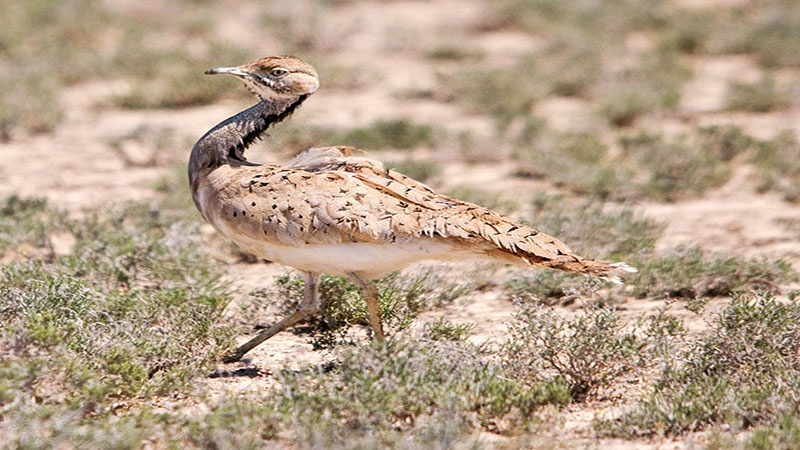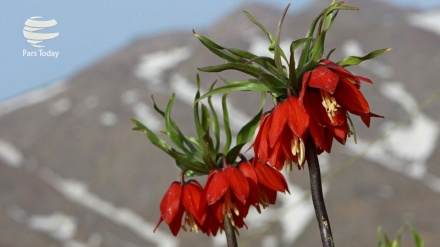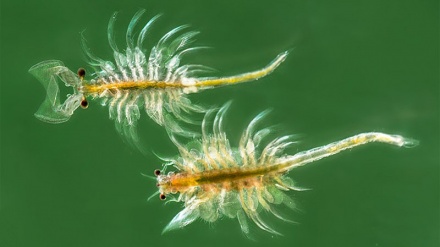Iran’s rare animal and plant species (15)
Dear listeners, welcome to this week’s episode of the series Iran’s Rare Animal and Plant Species.
One of the rare, migrant birds, which lives in Iran, and has been globally supported, is Houbara Bustard. This pretty bird can live in deserts. Today, we become familiar with the features of this beautiful bird.
Houbara Bustard is a bird which usually lives in Canary Island, North Africa, and Southwest Asia. Different types of this bird exist, one of which resides in Iran. The length of his bird from the tip of its beak to the rare-end of its tail stands at maximum 65 centimeters. The male and female Houbara Bustards are similar to each other in appearance, with the male ones being a bit larger than the female houbara bustards. The male houbara bustards maintain relatively long tails and narrow wings. They maintain two black and white stripes on the sides of their necks, while the background color of their feathers and wings are pale brown; turning into whitish in color, underneath their wings. They also maintain black and white stripes throughout their head and crest, with a pale brown background color, while the rear end of their tails is greyish in color. The male houbara bustards which have not reached puberty highly resemble female houbara bustards. However, the female ones have lesser number of feathers on the sides of their necks. These birds have large, yellow eyes and mainly remain silent and calm.
Houbara bustards are omnivorous and usually feed on seeds, narrow branches, leaves, and flowers. They also feed on grasshoppers, cockroaches, worms, spiders, ants, and lizards and even snakes. However, most of the time they feed on plant leaves, wheat and barley seeds, and some oil seeds, which are accessible. This bird is capable of highly adapting to environmental conditions in deserts and it rarely drinks water, while mainly absorbing water from what he eats. These birds make nests on the ground and rest next to bushes throughout warm summer days and mid-day. They search for food in the morning and/or in the afternoon, within the phase of which they can be easily spotted from a relatively far distance.
Houbara bustards display an interesting approach for defending themselves. If throughout its flight, a bird of prey would chase houbara bustards; the latter birds throw their sticky feces toward the bird of prey like a bomb. This natural bomb which is very sticky, glues the feathers and wings of the bird of prey, preventing these predator birds from flying. In fact, houbara bustards have used this method on several occasions against hawks; leading to the death of birds of prey.
Throughout the mating season, the male houbara bustards display a unique approach for attracting female houbara bustards; taking wide steps, while showing off feathers of their necks, and their crests. After the mating season, the female houbara bustard hatches two or three eggs in its nest, which is made by this bird from locoweed on the ground. The color of eggs highly resembles the color of desert soil which makes it difficult for birds of prey to spot these eggs. Meanwhile, the domesticated livestock, which are taken to the habitats of this bird for grazing, may step on these eggs and destroy them; thereby posing a threat against these birds.
In addition to destruction of the habitats of these birds, houbara bustards are also exposed to excessive poaching, pushing these birds to the verge of extinction. One of the factors behind poaching of these birds is the interest of Arab sheikhs of Persian Gulf littoral states in hunting of these birds. The majority of poachers hunt these birds for Arabs. The houbara bustard smugglers tend to smuggle these birds and their eggs to Arab countries, making huge profits. Meanwhile, the poachers of these birds face major punishments in Iran.
Although Islamic Republic of Iran has adopted wide-scale measures for protection of this rare bird; environmentalists believe that there is also need for regional and international cooperation in order to fully protect and safeguard houbara bustards.
MR/SS



